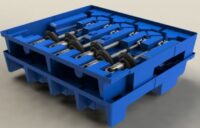
KPI – a performance indicator or key performance indicator is a type of performance Ohio Work measurement
Time Studies, Predetermined Time Studies / MODAPTS and Work Sampling are different Work Measurement tools.
A Work Measurement Study determines how long it should take to finish a task or series of tasks. Time studies are the most familiar. It breaks a series of tasks into individual tasks to time with a stopwatch. Each task is then reviewed for safety and time saving opportunities. Operator’s experience, effort and performance are evaluated to increase or decrease the overall time to calculate an expected “standard time” which is used for benchmarking, scheduling and operator evaluations.
Predetermined Time Studies such as MODAPTS, MTM and Most. MODAPTS stands for MODular Arrangement of Predetermined Time Standards. It breaks tasks down into micro-movements which are assigned predetermined codes that calculate an “expected” time. These expected times are added up to calculate an overall time that is universally accepted by unions and manufacturers across the world.
Documenting the micro-movements, which are the building blocks of a task, allows you to identify which movements can be eliminated with better tools, material staging or rearranging the sequence of tasks to reduce the overall time.
Work Sampling is a technique for determining how long it takes workers to perform a category of tasks such as machine set-up or assembling several parts together. It provides a quick analysis to determine a standard time for a manual manufacturing task.
These methods help identify the most efficient task sequence to minimize and standardize a task completion time. Standard Work defines what to do, when, and how long it should take. This can involve minimizing unnecessary movements or reaching too far for objects. By conducting a work measurement study, organizations can improve their productivity and efficiency.
Work Measurement is a productivity improvement tool. It establishes expected cycle times to improve scheduling, evaluate operator performance and benchmarks current productivity levels before making improvements.
Using Standard Work to Improve Processes
Accurate production rates within Standard Work Measurement Services enable the identification of where and why variation occurs. This quantitative data is crucial for many Six Sigma tools to improve processes.
Also, tools like OEE use standard rates as one of three variables to calculate productivity. Similarly, the foundation of ISO-9000 lies in standardizing processes to minimize variation. Once processes become repeatable, you can make and sustain improvements to create an improved process.
Work measurement identifies areas of waste, process variation, and lack of standardization in the workplace. Work measurement studies uncover ways to make work easier, and to produce products or services more efficiently and economically.
Reasons to use Standard Work
- To discover and eliminate lost or ineffective time.
- To decrease costs associated with inaccurate schedules.
- To benchmark performance for evaluating ROI on future improvement opportunities.
- To establish standard cycle times to calculate performance efficiencies.
- To measure performance against realistic expectations.
- To establish expectations for operating goals and objectives.
Work measurement uses labor standards to measure and control how long it takes to do a specific task. Labor standards are rules used in various settings, not just manufacturing. They are important for ensuring fair treatment and safety for workers.
- administration and clerical
- healthcare workers
- business processes
Summary
The key to improving your processes is benchmarking your current cycle times with accurate Standardized Work rates. These rates allow you to quantify and track your performance and identify improvement opportunities like reducing process variances. Let Productivity Solutions help you document and calculate accurate standardized rates. We can then cost-justify solutions to increase your profit margin.
Project Examples

Automotive Line Balancing
Utilized MODAPTS to rebalance automotive assembly line workstations.
- New 6-cylinder engine product launch required rebalancing 70 assembly line workstations.
- New 4-cylinder engine product launch required rebalancing 60 assembly line workstations.
- Removing parts from kits directly to line loading required rebalancing multiple assembly lines.

Repackaging Standard Rate Calculations – Standard Work Measurement Services
Utilized MODAPTS to calculate standard rates for a new process.
- Calculated the Standard Rate for transferring over 40 automotive engine parts from corrugated cardboard boxes and repackaging into plastic containers.

Compressed Gas Assembly Workstations – Standard Work Measurement Services
Time studies and historical data used to calculate over 500 production rates.
- Firstly, a combination of reviewing the variation in historical cycle time data, visual observations, and recording cycle times with stopwatches provides one of the most accurate ways to calculate standard rates.
- Consequently, accurate cycle times allow for rebalancing workloads depending on product demand and operator availability.
